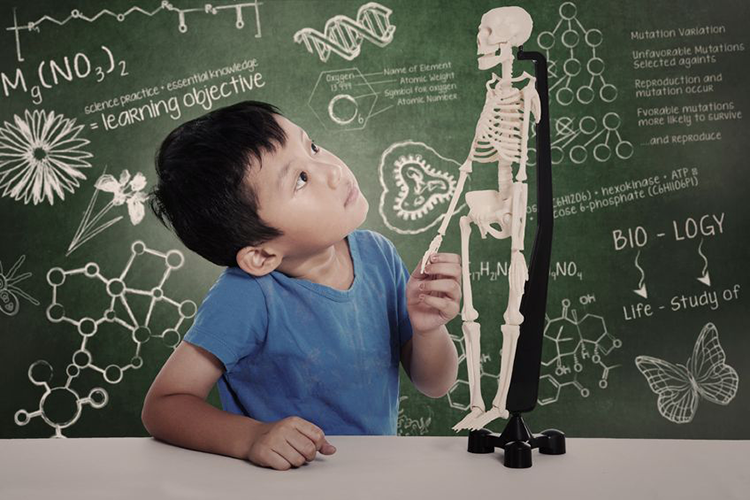
Child Development
Technology in Education
Well into the late 20th century, it was still common for young children to grow and develop in a physically interactive environment. This was a world of play in which children were free to move, touch and connect with families and playmates in a fascinating and often rough-and-tumble world where Nature loomed large.
However, times change, and sociological and technological developments have impacted upon the lives of all 21st-century generations. For today’s parents, technological change has meant adapting to an ever-expanding range of devices designed to make their lives faster, easier, more productive, and more entertaining. And importantly, they are coping with ‘life in the fast lane’ as adults fortified by their own traditional interactive experiences. As a result, they have enthusiastically embraced the novelty of the world of smartphones and tablets with a discernible hunger to experience its benefits.
A Different Perspective
Today’s young children, on the other hand, view our current world from a different perspective. Having grown up in a digital world, these ‘virtual’ children have enjoyed the benefits of interactive technology from the womb onwards, and many observers believe major parts of their development have been shaped and affected by its unforeseen influences. Evidence cited for this trend includes ‘baby TV’, and the prevalence of iPads and a host of digital toys used to entertain and stimulate babies from their earliest years. Furthermore, researchers are now actively exploring the outcomes of such reliance upon child-care technologies and the likely implications for these children as they grow into adulthood.
The adaptation of ‘standards’ as a means of improving our lives is widespread in modern society. Though this has clearly brought benefits for all, with childcare it has often produced a ‘dependency culture’ in which the parental expectation is that they can rely on schools and nurseries to meet all of their child’s developmental needs. Whilst this may appear reasonable to some extent, on closer examination, it is clear that institutions cannot even get close to meeting every child’s need for physical interactions on the scale enjoyed in the home environment by young children of previous generations. Although most now enjoy plenty of ‘virtual interaction’ at home and at school/nursery, this is no compensation.
What is the Science of Childcare? – Download Free eBook
Cris Rowan, author of ‘Virtual Child’, and a passionate and concerned critic of technology’s impact on the learning and development of the young, identifies “four critical factors necessary to achieve healthy child development… movement, touch, human connection, and exposure to nature.” She argues that positive action is demanded to redress the balance and allow modern children to access and enjoy the same social development as their forebears.
[More information on learning through rough & tumble Play, the benefits & Legislation.]
Developing New Initiatives
Prompted by such high-level criticism, those responsible for childcare standards have begun to develop initiatives which address the problem that ‘child technology addictions (may) collapse both education and health budgets’. Many studies have detailed the predicted cost of ignoring this social time-bomb of poor health and devastated relationships this rising generation may endure, with some researchers predicting we may see the first generation not guaranteed to outlive their parents.
In response, some institutions have adopted technology screening and management policies, and research evidence has shown that short-term benefits so far have not only included a reduction in technology use but a reduction in obesity levels also. Parents have been encouraged to support Balanced Technology Management whereby adults take responsibility for ensuring a scheduled balance between the activities and experiences a child needs for optimal development and the child’s use of technology.

Outdoors in the playground and in Nature, institutions have been at pains to transform these areas from litigation-averse ‘developmentally unchallenging structures’ into green spaces where supervised rough-and-tumble play and injury-reducing environmental modifications have produced child development friendly benefits. As anticipated, there have been physical improvements and improved cognitive performance, with children noticeably calmer and better behaved, and many children with special needs given opportunity to blossom.
[Helpful article: Encouraging the use of natural materials & the benefits in your nursery environment.]
Changing The Future
Given the extent of the problem, and the positive results achieved by present interventions, this would seem a timely moment to ask child development professionals in the pre-school nursery, health, and education sectors what additional support and resources they would need to scale up this re-balancing of our children’s development opportunities to an appropriate level.
Nursery managers probably have the major responsibility for managing children overloaded with the ill-effects of interactive technologies, and it would be instructive to hear their response to the following questions:
How do you manage this task, what best practice works for you and what best practice have you encountered which you would like to actuate into your own local environment?
It is to be hoped all professionals will take every opportunity to identify best practice wherever it occurs, describing the process and sharing the development-enhancing outcomes. Such an initiative would massively help to reverse the effects of technology on a generation of young people whilst we still can.







Pingback: Nursery Environments: How often do you get their hands dirty? |